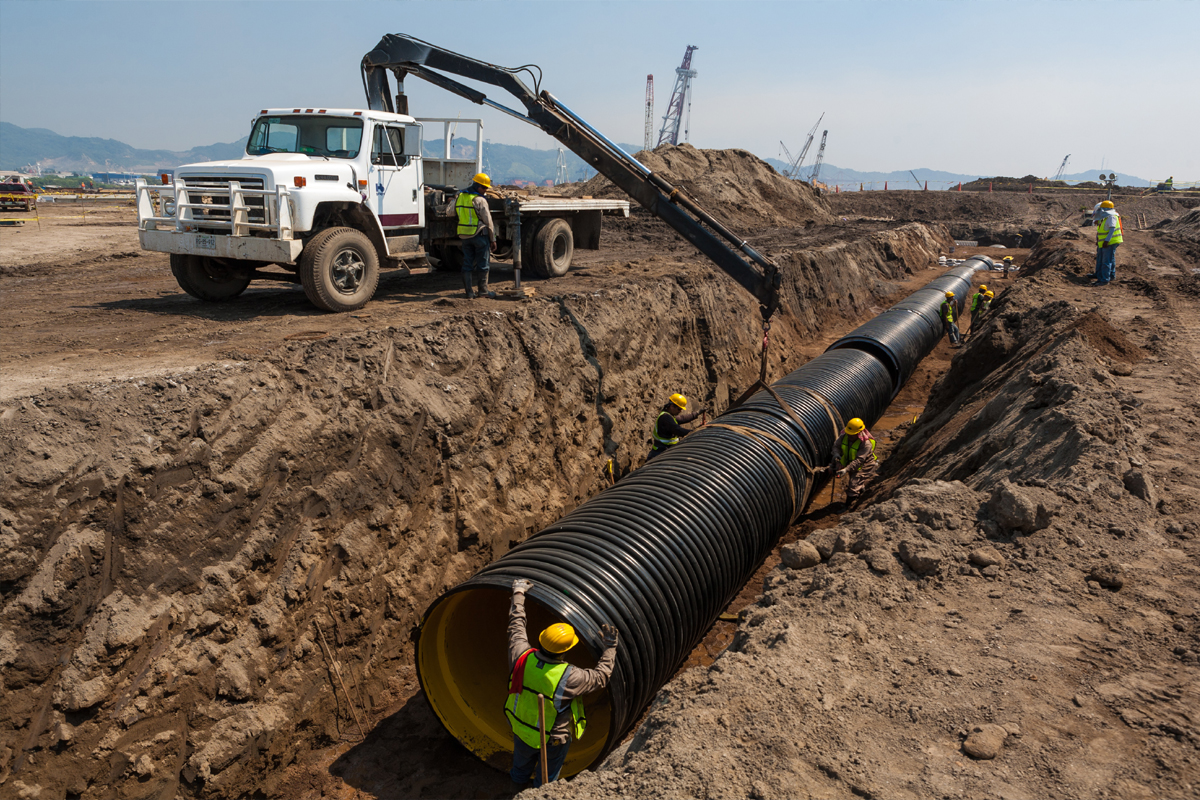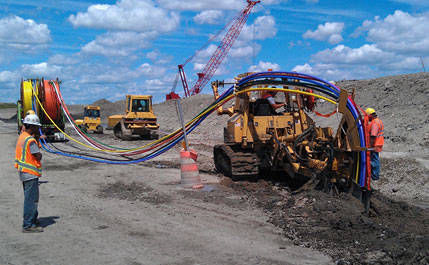ENVIRONMENTAL ATTRIBUTES
Energy Performance
Using recycled HDPE pipe saves energy in the manufacturing process, using less energy than the creation of virgin plastic. Recycling plastic saves significant energy over the creation of new plastic.
Resource Impacts
HDPE pipe has a service life of 100 years and can then theoretically be recycled. Recycled HDPE has minimal impact on the environment since it keeps material out of the waste stream. While most recycled plastic markets are specifically tailored to post-consumer bottles, a pipe manufacturer or large end user should be able to find a recycling facility that will accept their HDPE pipe. Recycling post-consumer PVC is difficult because of its wide range of additives and formulations.
Health Considerations
Although PVC is more resistant to combustion, it smolders at a lower temperature than HDPE and releases toxic hydrochloric gases before combustion. Dioxin is an unavoidable byproduct of PVC manufacture and is a bio accumulative toxin, building up in fat tissues of living things, and becoming more concentrated as it moves up the food chain.
PVC pipe generally requires toxic solvent glues to join sections, whereas HDPE pipe sections are simply melted together. PVC also requires the addition of toxic heavy metal stabilizer organotins (carbon and metal compounds), which have problems with leaching.
FUNCTIONAL CONSIDERATION
Cost
Material prices are comparable to PVC. However, material costs may not be the determining factor in pipe selection. Contractors who have never used HDPE may be resistant to working with an unfamiliar material. For example, a study conducted by engineers with the Oklahoma Water District found that HDPE would cost less than PVC when considering projected leaks, breaks, joint failure, and associated water lost over a 15-year period.
Installation
Because HDPE pipe can be delivered in longer lengths, thus requiring a smaller number of joints, it has better leak resistance than PVC pipe. Also, butt fusion joint welding provides stronger, tighter, more leak proof joints than the bell and spigot or solvent glue joints used for PVC. The longer lengths of HDPE can require that longer trenches are open at one time, although its length and flexibility may allow trenchless installations
Fusion welding requires a fusion machine for larger diameter pipe, which could be problematic in tight spaces. A handheld device can be used for smaller diameter pipes. Mechanical couplings are available for HDPE, though these couplings are sometimes made of PVC
Because HDPE has a higher coefficient of thermal expansion than other pipe plastics, above-ground applications will warrant extra care in anchor and support design if the pipe will be subject to significant temperature swings.

